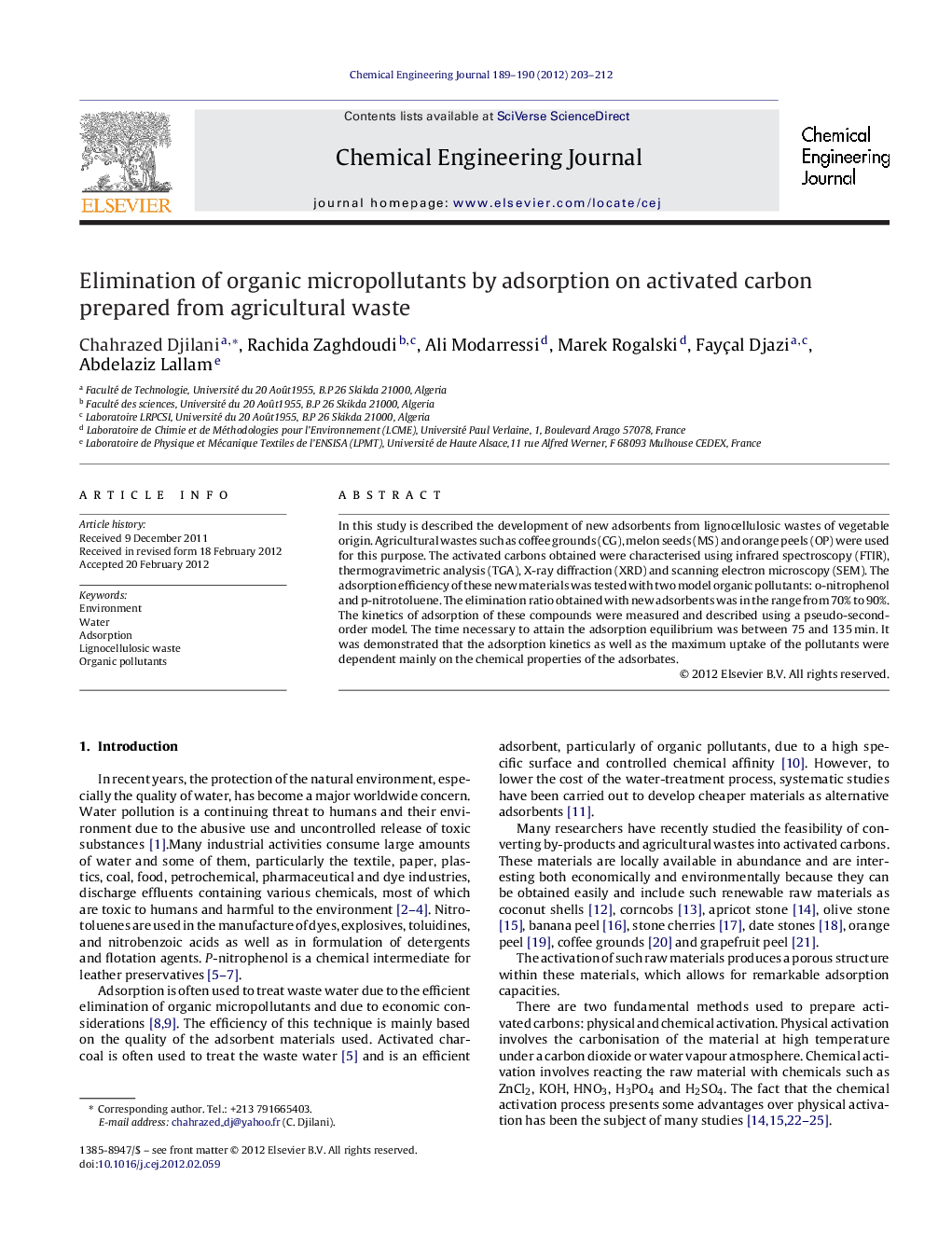| Article ID | Journal | Published Year | Pages | File Type |
|---|---|---|---|---|
| 149973 | Chemical Engineering Journal | 2012 | 10 Pages |
In this study is described the development of new adsorbents from lignocellulosic wastes of vegetable origin. Agricultural wastes such as coffee grounds (CG), melon seeds (MS) and orange peels (OP) were used for this purpose. The activated carbons obtained were characterised using infrared spectroscopy (FTIR), thermogravimetric analysis (TGA), X-ray diffraction (XRD) and scanning electron microscopy (SEM). The adsorption efficiency of these new materials was tested with two model organic pollutants: o-nitrophenol and p-nitrotoluene. The elimination ratio obtained with new adsorbents was in the range from 70% to 90%. The kinetics of adsorption of these compounds were measured and described using a pseudo-second-order model. The time necessary to attain the adsorption equilibrium was between 75 and 135 min. It was demonstrated that the adsorption kinetics as well as the maximum uptake of the pollutants were dependent mainly on the chemical properties of the adsorbates.
► CCG, CMS and COP are good adsorbents to remove p-nitrotoluene and o-nitrophenol from aqueous solutions. ► FTIR, XRD, TGA, and SEM techniques were used to characterise the samples. ► All the kinetics data agreed well with the pseudo-second-order kinetic model.
